
How to Use Raspberry Pi 4B: Examples, Pinouts, and Specs
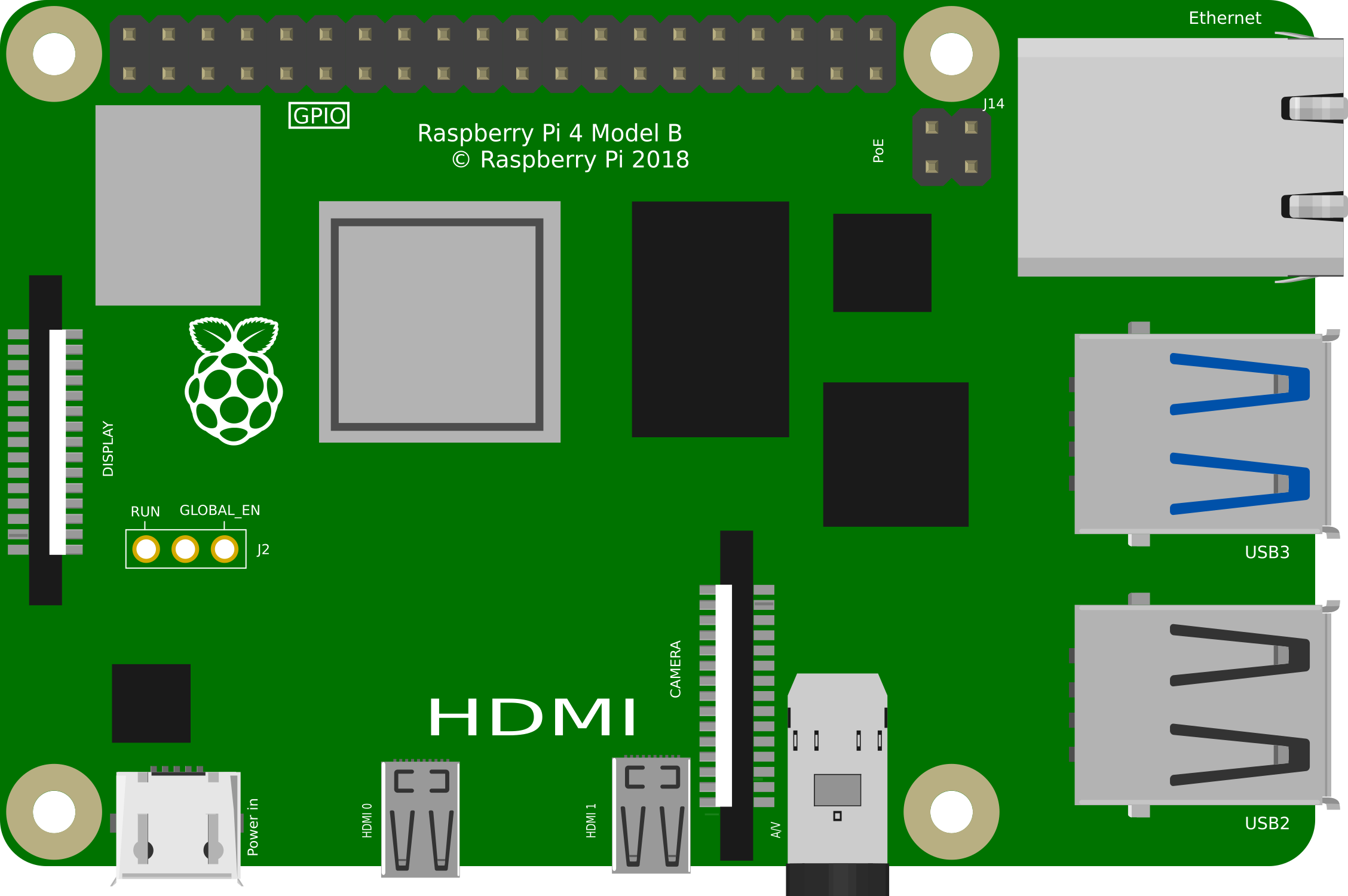
 Design with Raspberry Pi 4B in Cirkit Designer
Design with Raspberry Pi 4B in Cirkit DesignerIntroduction
The Raspberry Pi 4B, manufactured by Ala (Part ID: 4), is a compact and affordable single-board computer designed for a wide range of applications. It features a powerful quad-core processor, up to 8GB of RAM, multiple USB ports, dual micro-HDMI outputs, and Ethernet connectivity. This versatile device is ideal for projects such as programming, media centers, IoT applications, robotics, and more. Its small form factor and robust performance make it a popular choice for both hobbyists and professionals.
Explore Projects Built with Raspberry Pi 4B
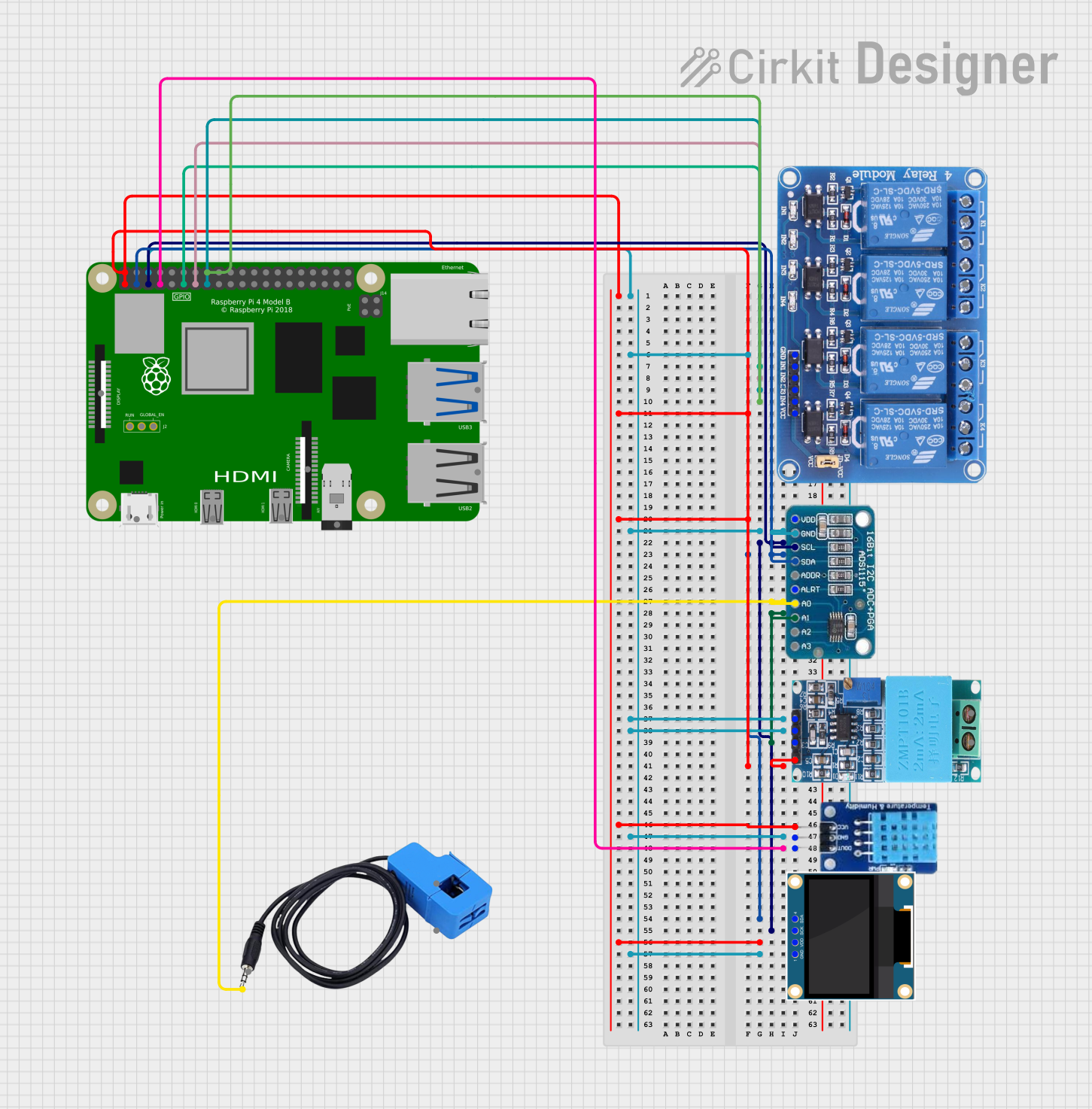
 Open Project in Cirkit Designer
Open Project in Cirkit Designer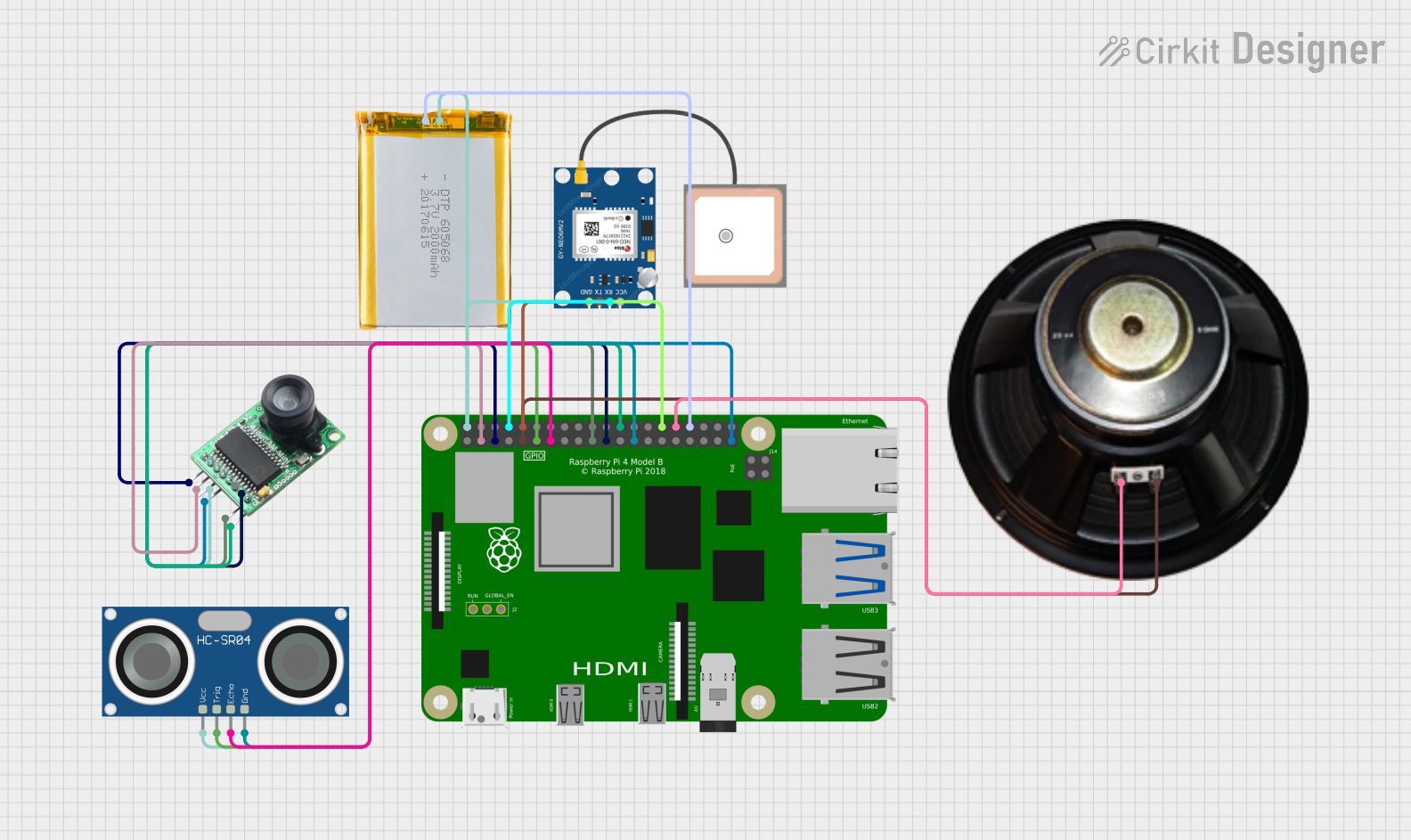
 Open Project in Cirkit Designer
Open Project in Cirkit Designer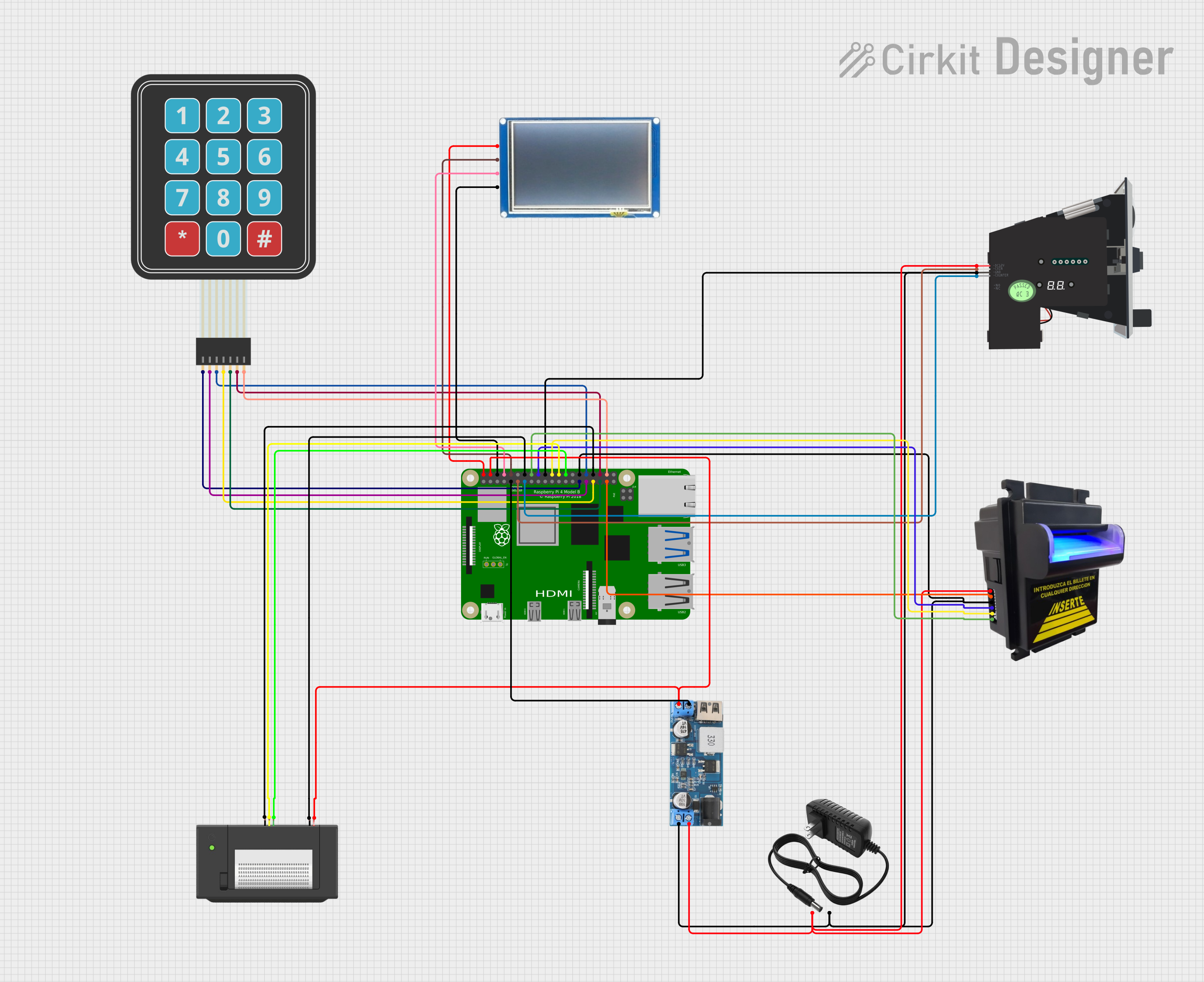
 Open Project in Cirkit Designer
Open Project in Cirkit Designer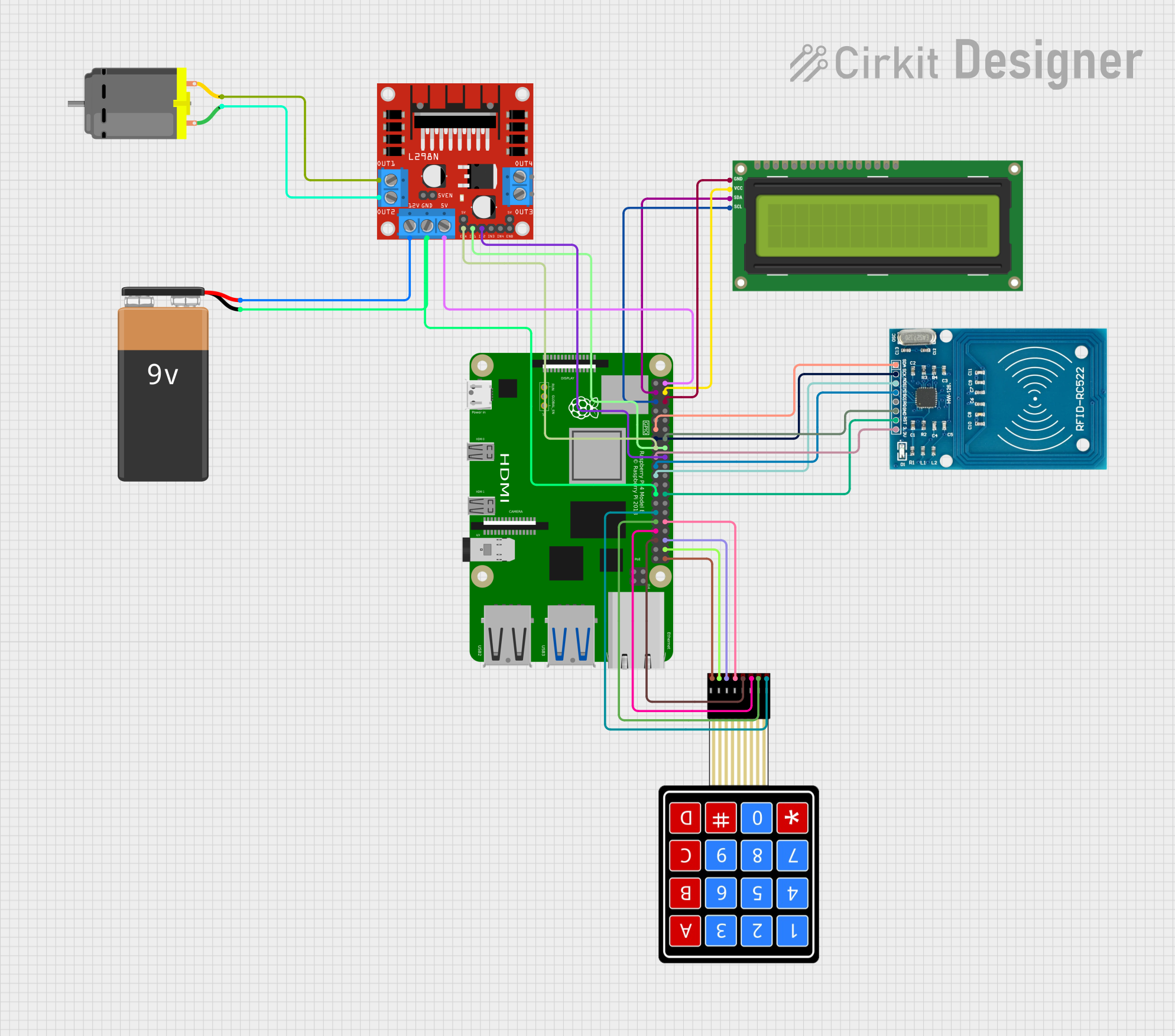
 Open Project in Cirkit Designer
Open Project in Cirkit DesignerExplore Projects Built with Raspberry Pi 4B

 Open Project in Cirkit Designer
Open Project in Cirkit Designer
 Open Project in Cirkit Designer
Open Project in Cirkit Designer
 Open Project in Cirkit Designer
Open Project in Cirkit Designer
 Open Project in Cirkit Designer
Open Project in Cirkit DesignerCommon Applications and Use Cases
- Programming and Education: Ideal for learning programming languages like Python, C++, and Java.
- Media Centers: Can be used to build a home theater system with software like Kodi.
- IoT Projects: Acts as a hub for Internet of Things devices and sensors.
- Robotics: Powers robots and automation systems with its GPIO pins.
- Web Servers: Functions as a lightweight web server for hosting small websites or applications.
Technical Specifications
The Raspberry Pi 4B offers a range of features and capabilities. Below are its key technical specifications:
General Specifications
| Feature | Specification |
|---|---|
| Processor | Quad-core Cortex-A72 (ARM v8) 64-bit @ 1.5GHz |
| RAM Options | 2GB, 4GB, or 8GB LPDDR4 |
| Storage | MicroSD card slot |
| USB Ports | 2x USB 3.0, 2x USB 2.0 |
| HDMI Output | 2x micro-HDMI (4K@60Hz supported) |
| Ethernet | Gigabit Ethernet |
| Wireless Connectivity | Dual-band 802.11ac Wi-Fi, Bluetooth 5.0 |
| GPIO Pins | 40-pin header |
| Power Supply | 5V/3A via USB-C |
| Dimensions | 85.6mm x 56.5mm x 17mm |
Pin Configuration and Descriptions
The Raspberry Pi 4B features a 40-pin GPIO header for connecting peripherals and sensors. Below is the pinout:
| Pin Number | Pin Name | Description |
|---|---|---|
| 1 | 3.3V Power | 3.3V power supply |
| 2 | 5V Power | 5V power supply |
| 3 | GPIO2 (SDA1) | I2C Data |
| 4 | 5V Power | 5V power supply |
| 5 | GPIO3 (SCL1) | I2C Clock |
| 6 | Ground | Ground |
| 7 | GPIO4 | General-purpose I/O |
| 8 | GPIO14 (TXD0) | UART Transmit |
| 9 | Ground | Ground |
| 10 | GPIO15 (RXD0) | UART Receive |
| ... | ... | ... (Refer to official documentation for all pins) |
Usage Instructions
How to Use the Raspberry Pi 4B in a Circuit
- Powering the Device: Use a 5V/3A USB-C power adapter to power the Raspberry Pi 4B.
- Connecting Peripherals: Attach a monitor via micro-HDMI, a keyboard and mouse via USB, and a microSD card with the operating system installed.
- GPIO Usage: Connect sensors, LEDs, or other peripherals to the GPIO pins. Ensure proper voltage levels to avoid damage.
- Networking: Use the Ethernet port or Wi-Fi for internet connectivity.
Important Considerations and Best Practices
- Cooling: The Raspberry Pi 4B can get warm under heavy loads. Use a heatsink or fan for cooling.
- Power Supply: Ensure the power supply provides sufficient current (5V/3A) to avoid instability.
- Static Precautions: Handle the board carefully to avoid static discharge damage.
- Software: Install the official Raspberry Pi OS or other compatible operating systems on the microSD card.
Example: Blinking an LED with GPIO and Arduino UNO
The Raspberry Pi 4B can control an LED using its GPIO pins. Below is an example Python script for blinking an LED connected to GPIO17 (pin 11):
Import the GPIO library and time module
import RPi.GPIO as GPIO import time
Set up GPIO mode to use physical pin numbering
GPIO.setmode(GPIO.BOARD)
Define the GPIO pin for the LED
LED_PIN = 11
Set up the LED pin as an output
GPIO.setup(LED_PIN, GPIO.OUT)
try: while True: GPIO.output(LED_PIN, GPIO.HIGH) # Turn the LED on time.sleep(1) # Wait for 1 second GPIO.output(LED_PIN, GPIO.LOW) # Turn the LED off time.sleep(1) # Wait for 1 second except KeyboardInterrupt: # Clean up GPIO settings on exit GPIO.cleanup()
Running the Code
- Connect an LED to GPIO17 (pin 11) with a resistor in series.
- Save the script as
blink.pyon the Raspberry Pi. - Run the script using the command:
python3 blink.py.
Troubleshooting and FAQs
Common Issues and Solutions
The Raspberry Pi does not boot:
- Ensure the microSD card is properly inserted and contains a valid operating system.
- Check the power supply for sufficient voltage and current.
Overheating:
- Use a heatsink or fan to cool the Raspberry Pi during intensive tasks.
No display on the monitor:
- Verify the micro-HDMI cable is connected to the correct port.
- Ensure the monitor is powered on and set to the correct input source.
GPIO pins not working:
- Check the pin configuration in your code.
- Ensure the connected peripherals are functioning and properly wired.
FAQs
Can I power the Raspberry Pi 4B via GPIO pins? Yes, you can power it using the 5V and GND pins, but this is not recommended as it bypasses the onboard power management.
What operating systems are compatible with the Raspberry Pi 4B? The Raspberry Pi 4B supports Raspberry Pi OS, Ubuntu, and other Linux-based distributions.
Can I use the Raspberry Pi 4B for gaming? Yes, it can run retro gaming emulators like RetroPie or Recalbox.
This concludes the documentation for the Raspberry Pi 4B. For further details, refer to the official Raspberry Pi documentation.